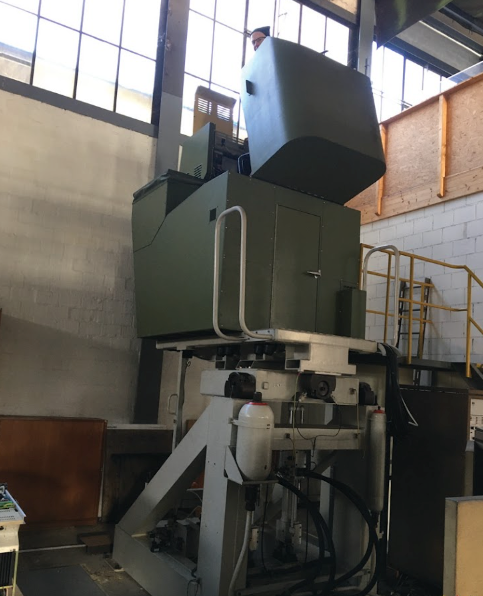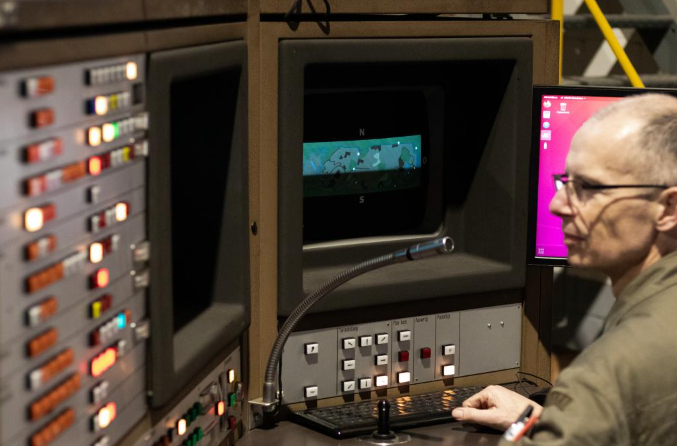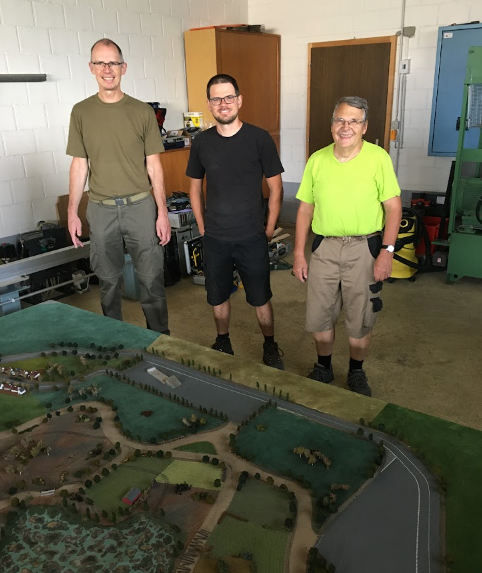Ultimate upcyclers
In 2004, the Military Museum saved one of the FASIP systems in Thun from being scrapped, and rebuilt it at the museum site in the village of Full. But, after several years, various defects in the antiquated computers and in other electronic components had led to its apparent end. The Full museum’s dedicated helpers, Gerold Handschin, Michael Salathé and René Demarmels, could not resign themselves to this. Instead, they began a thorough analysis of how the FASIP system worked, identified defects, and gradually replaced any components that failed. Their aim was to replace each item “as faithfully as possible.”

Sadly, the original 1970s MITRA-125 computer which controlled almost every aspect, including responding to the displacement sensors and controlling the simulator’s movements, lamp, and displays, was defective. This central control unit clearly needed to be replaced. “Fortunately, the program in operation on the MITRA-125 was available as a hard copy. So we decided to replace the old computer with a new system,” says Gerold. The only issue: it was all in French. Scanning in the several-thousand-page document and using text recognition software helped, but in some cases the type had faded so much that the characters could not be recognised. “We sometimes had to approach the correct parameter values by trial and error,” says Gerold, but new C-based simulator software for Raspberry Pi was eventually written.

Restoration challenges
The decision to use Raspberry Pi 3B+ as the new central control computer was down to its GPIO, its size, and the price. Raspberry Pi was fitted onto a new adapter board via its interface slot, replacing the interface board for the MITRA-125. The original power supply units were in poor condition and voltages were no longer stable, so modern switching power supplies were fitted. “The new adapter board contains multiplexers to connect all the signals needed for the Raspberry Pi GPIO,” explains Gerold. It was also used to adjust the 3.3 V voltage of the GPIO to the 5 V TTL logic of the existing systems.

The IO plug-in unit’s original boards, XERUDI and XUCI, were replaced by the new board and Raspberry Pi too, but it was a challenge to work out the correct timing when driving the components of the interface plug-in unit. The overhaul of the simulator was completed at the end of July 2020. Since then, it has been possible to drive the Panzer 68 simulator through the grounds at the Swiss Military Museum in Full by appointment.






